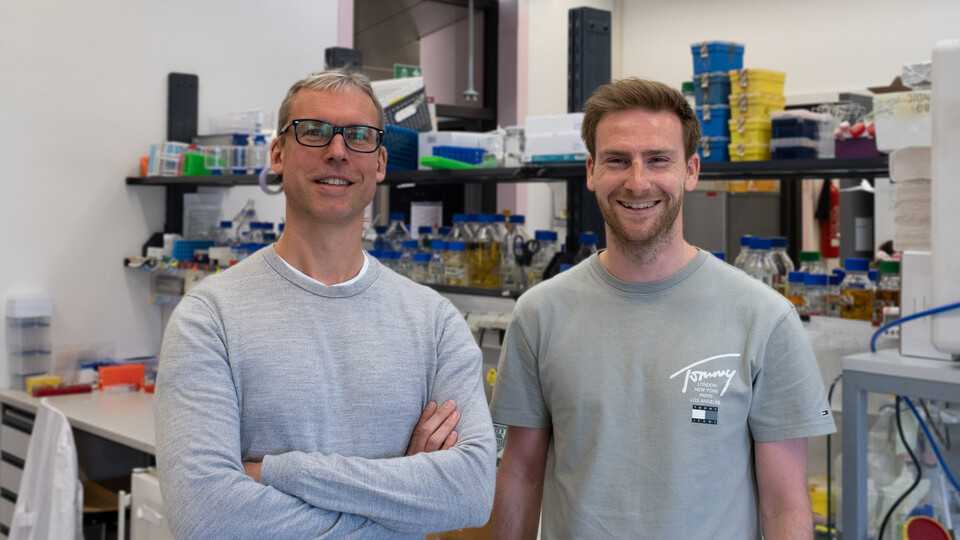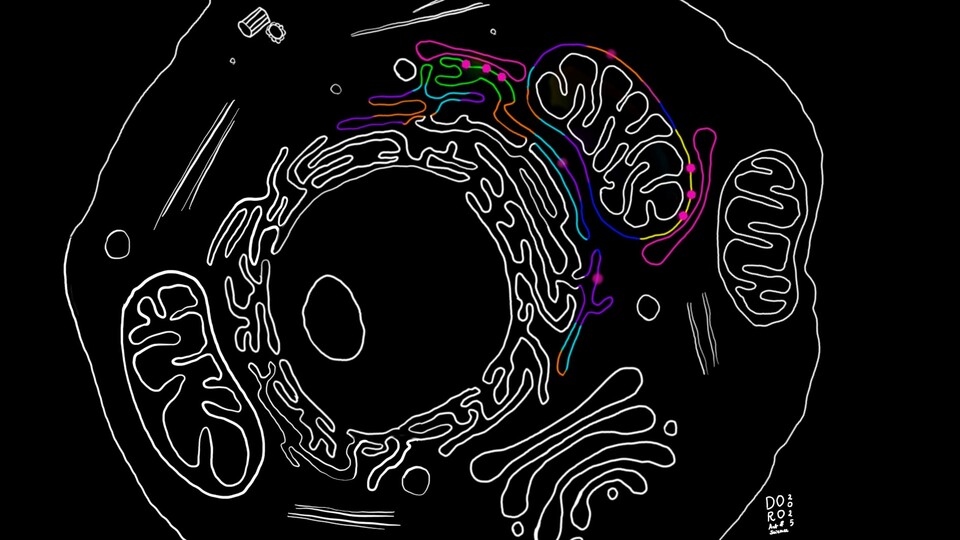

Defects in mitophagy - the selective degradation of mitochondria – are implicated in the development of Parkinson’s disease (PD). For years, research has focused almost exclusively on the PINK1/Parkin pathway, which drives mitophagy upon mitochondrial membrane depolarization. However, recent findings highlight the importance of alternative pathways involving transmembrane mitophagy receptors, which operate independently of the ubiquitin-driven recruitment mediated by PINK1 and Parkin. These membrane-bound receptors are embedded in the mitochondrial outer membrane and facilitate mitophagy in response to different cellular conditions. Exploring how these parallel pathways function and are regulated has been a key focus of the Martens lab, led by postdoctoral researcher Elias Adriaenssens.
“We found that NIX and BNIP3 – two well-known transmembrane mitophagy receptors – could trigger autophagy without binding to FIP200, which was quite unexpected,” explains Elias. FIP200 is widely considered essential for the initiation of autophagy, serving as a hub for the recruitment of the rest of the machinery. “This left us puzzled. Despite extensive testing, we couldn’t detect an interaction of FIP200 with either of the receptors – raising the key question of how they function in the absence of what was thought to be a critical component”, he adds. Mass spectrometry, however, revealed that other autophagy components, called WIPI proteins, were binding to these mitochondrial transmembrane receptors. Conventionally believed to act further downstream in the pathway, the involvement of WIPI proteins in the initiation of autophagy was surprising.
The researchers discovered that WIPI binding is essential for the alternative mitophagy pathway driven by NIX/BNIP3. Instead of engaging FIP200 directly, NIX/BNIP3 rely on WIPI proteins to recruit the FIP200/ULK1 complex through a previously unknown interaction – revealing a parallel route that bypasses the conventional starting point. To determine whether this mechanism was unique or, rather, more widespread, the team screened the binding of all known transmembrane autophagy receptors to WIPI proteins in silico using AlphaFold. In addition to mitophagy receptors, several receptors from other organelles were predicted to bind WIPI proteins. Follow-up experiments confirmed these interactions, indicating that WIPI-mediated recruitment is not an exception, but may in fact mediate previously unrecognized pathways in selective autophagy.
“This is an exciting finding – it reveals a parallel initiation route for selective autophagy. Rather than a single, universal mechanism, cells appear to use distinct molecular strategies depending on the receptor and context. Until now, no one considered WIPI proteins as central players in the initiation of autophagosome formation, but our discovery could change that perspective”, Elias says. “It’s easy to see why the field focused so heavily on the PINK1/Parkin pathway – it’s linked to Parkinson’s, the tools to study it were available, and it took over a decade to unravel its biology. But when we looked at the bigger picture, it was clear there was a huge knowledge gap surrounding other mitophagy pathways. Our lab was uniquely positioned to explore these neglected areas, using biochemical reconstitution to obtain fundamental mechanistic insights.” Looking ahead, a key question the study raises is how cells decide between alternative mitophagy pathways – why some receptors use one over the other, and what factors determine which pathway is employed. Discriminating between selective mitophagy pathways could pave the way for therapies that specifically activate one pathway to compensate for defects in the other, with long-term potential in the treatment of Parkinson’s Disease.
DOI: 10.1038/s41556-025-01712-y
Read an article about the study in the University of Vienna's magazine Rudolphina (in German)
Watch an interview with group leader Sascha Martens about the study (in German)